Chasing The Northern Lights: The Journey To Witness Nature’s Most Magical Show
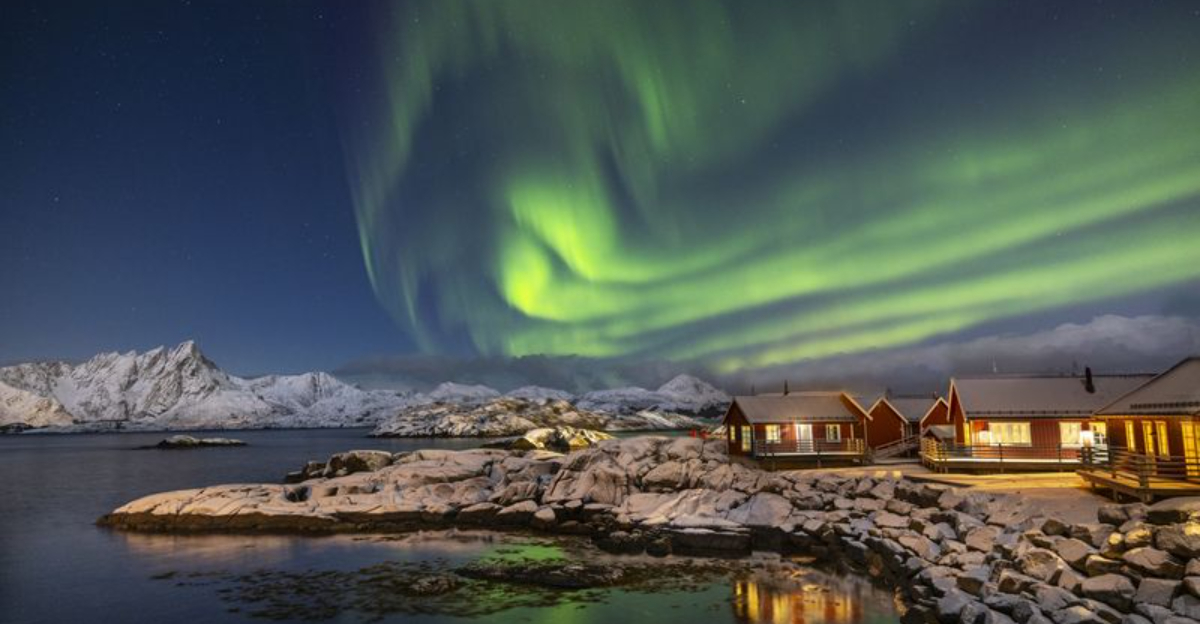
Few travel experiences compare to watching waves of color ripple across a night sky. Caused by solar particles interacting with Earth’s atmosphere, the northern lights create vivid displays of green, pink, and purple that have fascinated travelers for generations.
Seeing them isn’t guaranteed — it takes planning, the right conditions, and sometimes a bit of waiting — but when it all comes together, it’s one of the most unforgettable sights nature has to offer.
1. Why The Northern Lights Captivate

Few natural wonders create such a profound sense of awe. Standing beneath the dancing sky, travelers often describe feeling tiny yet connected to something enormous.
The northern lights appear on countless bucket lists because they combine unpredictability with spectacular beauty. Unlike visiting a monument or landmark, each aurora display is unique, creating a magical, unrepeatable moment in time.
2. Iceland

Volcanic landscapes create otherworldly backdrops for the dancing lights above. Iceland’s relatively mild winter temperatures make aurora hunting more comfortable than other Arctic destinations.
Rental cars provide freedom to chase clear skies, while natural hot springs offer warm relaxation between viewing sessions. The country’s small size means travelers can combine northern lights with waterfalls, geysers, and black sand beaches in a single trip.
3. Finland (Lapland)
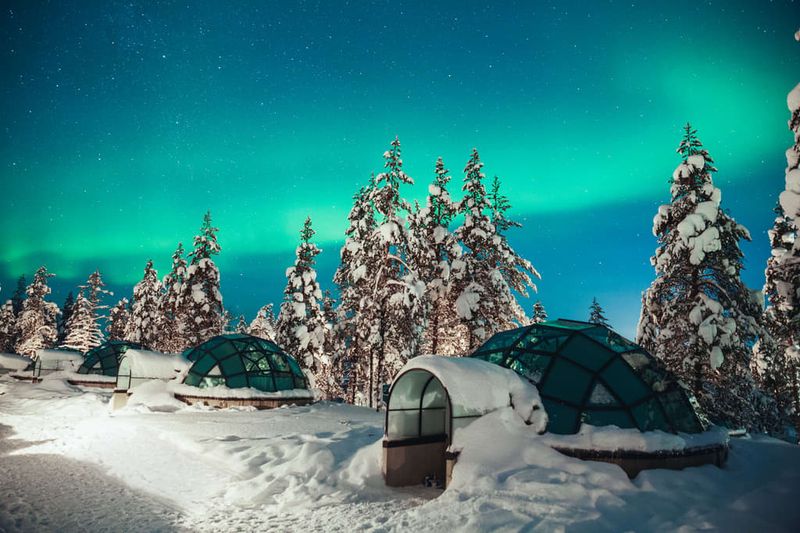
Remote wilderness areas provide truly dark skies free from light pollution. Finnish Lapland combines excellent aurora viewing with authentic cultural experiences among the indigenous Sami people.
Glass igloos and aurora cabins let visitors watch the light show from their beds. During daylight hours, reindeer safaris, snowmobiling, and ice fishing keep adventurers busy while waiting for darkness to fall.
4. Sweden (Abisko)

Nestled in a unique microclimate, this area enjoys more clear nights than almost anywhere in the aurora zone. The surrounding mountains create a “blue hole” effect that parts clouds even when nearby regions are overcast.
Abisko’s Sky Station, perched on a mountaintop, offers heated viewing and photography platforms. Many aurora chasers consider Swedish Lapland the most reliable destination for crossing this natural wonder off their bucket list.
5. Alaska (Fairbanks)
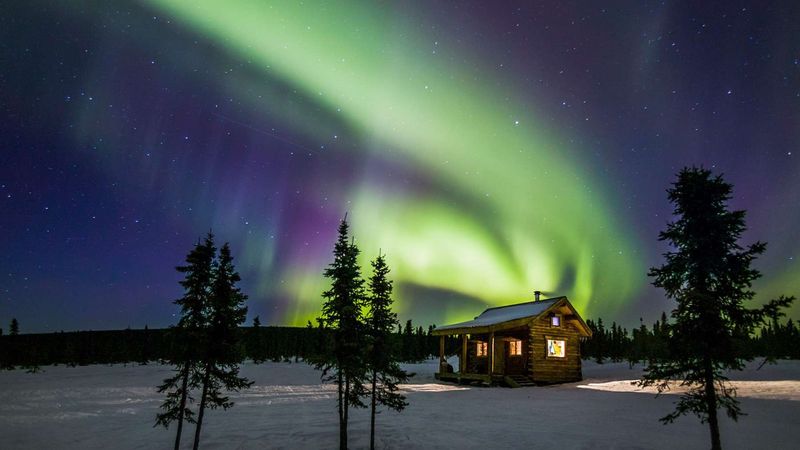
Located directly under the aurora oval, this northern city experiences activity on over 200 nights annually. The interior location means drier, clearer weather than coastal Alaskan regions.
Fairbanks combines frontier charm with modern amenities for aurora chasers. Hot springs, dog mushing, and ice sculpting festivals provide daytime entertainment. Chena Hot Springs Resort even offers aurora wake-up calls when the lights appear.
6. Canada (Yukon, Northwest Territories)
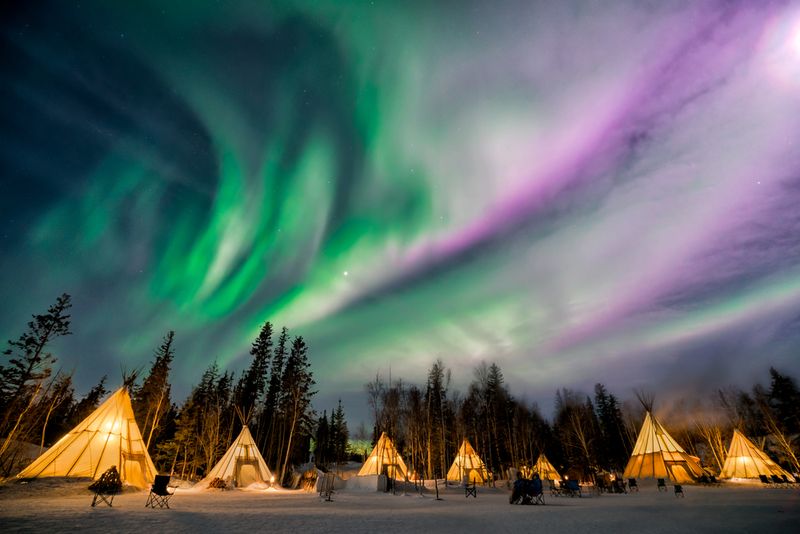
Pristine wilderness stretches as far as the eye can see in these aurora hotspots. The vast, undeveloped landscape means virtually no light pollution to dim the celestial spectacle.
Yellowknife, nicknamed the “Aurora Capital,” offers viewing from heated tepees on frozen lakes. The Canadian north combines Indigenous cultural experiences with world-class northern lights viewing. Many lodges offer photography workshops to help capture the perfect aurora shot.
7. Norway (Tromsø, Lofoten)

Situated within the aurora oval, these destinations offer some of the most reliable viewing conditions on Earth. Norway’s combination of coastal climate and northern latitude creates perfect viewing conditions.
Beyond aurora hunting, visitors enjoy dog sledding, whale watching, and exploring picturesque fishing villages. The dramatic fjords and mountains provide stunning foregrounds for northern lights photography.
8. Choosing The Destination
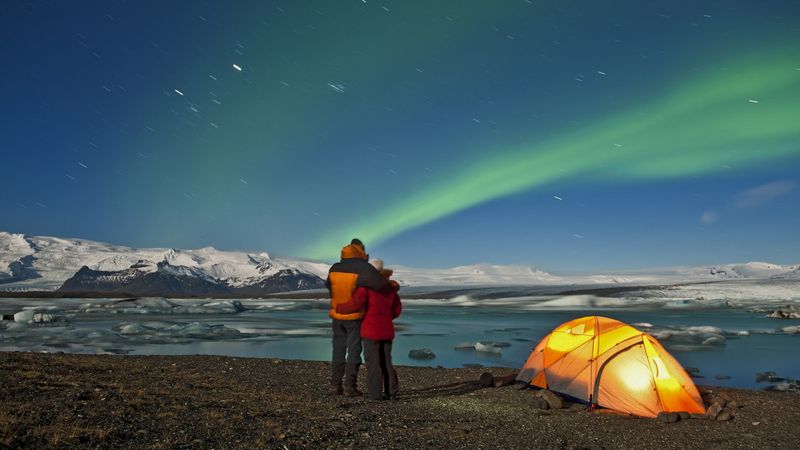
Budget considerations significantly impact destination choices for aurora hunters. Scandinavian countries offer reliable viewing but at premium prices, while Canadian options may provide better value.
Accessibility matters too – some locations require multiple flights and ground transportation. Consider what else interests you beyond the lights themselves. Each aurora destination offers different complementary activities, from hot springs to wildlife viewing.
9. Best Time To Go
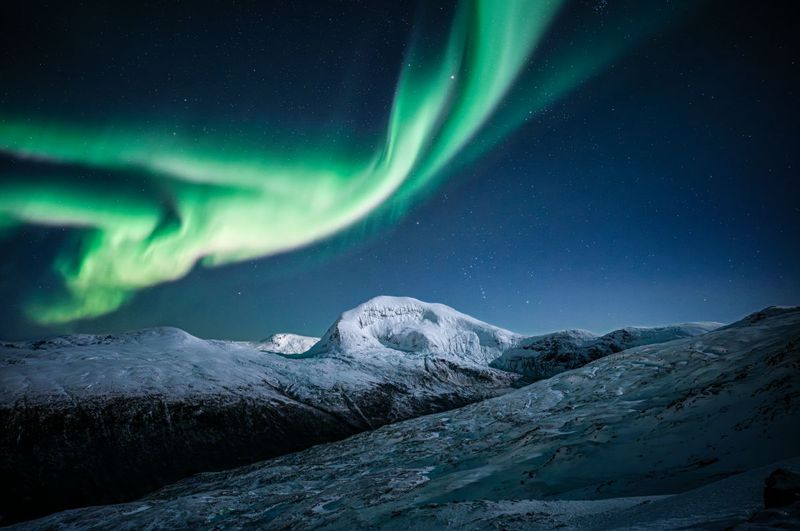
Peak viewing season spans September through March when darkness extends for many hours. December through February offers longest nights but often harsher weather conditions.
September, October, and March balance decent darkness with milder temperatures. Successful aurora hunting requires patience – plan to stay at least 3-4 nights to increase viewing chances. New moon periods provide darker skies that make even faint auroras visible.
10. Booking Accommodations
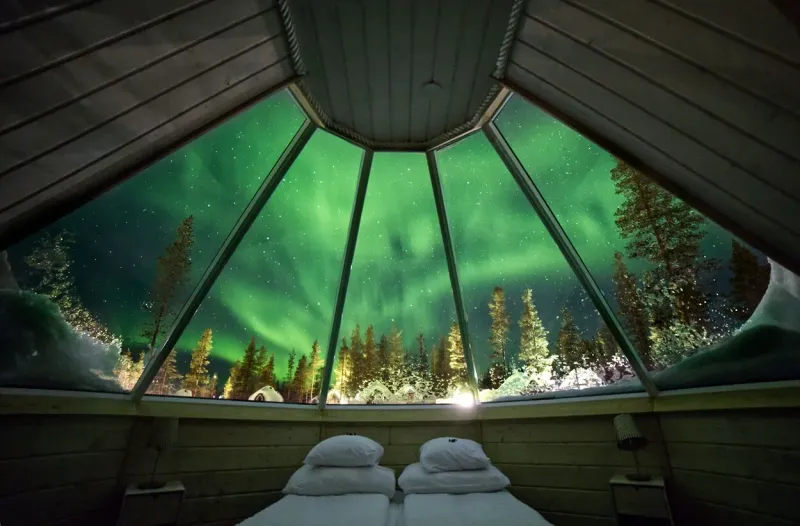
Rural properties away from city lights dramatically improve viewing potential right from your doorstep. Many specialized lodges offer aurora alarms, wake-up calls, or text alerts when lights appear.
Consider accommodations with north-facing windows or outdoor viewing platforms. Glass-roofed rooms, heated outdoor lounges, and photography hides are worth the splurge for serious aurora hunters. Book accommodations 6-12 months ahead, as prime properties sell out quickly.
11. Packing Essentials
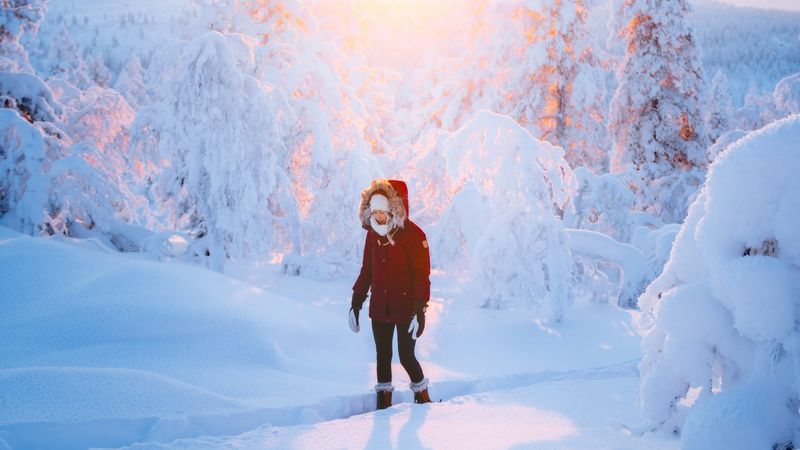
Extreme cold demands specialized gear beyond regular winter clothing. Layer system starts with moisture-wicking base layers, followed by insulating mid-layers and windproof outer shell.
Hand and foot warmers prove invaluable during hours of standing still. Camera equipment needs extra batteries (cold drains them quickly) and tripods for long exposures. Don’t forget headlamps with red light mode to preserve night vision while setting up equipment.
12. Weather Challenges
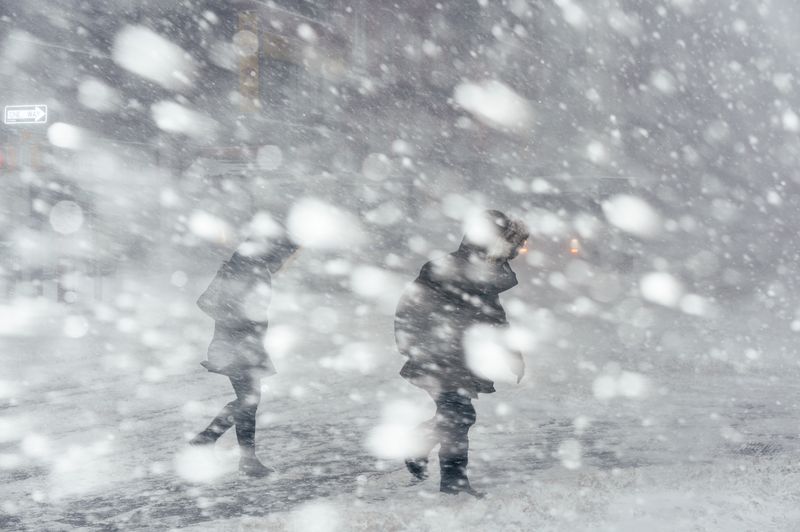
Cloud cover presents the biggest obstacle to successful aurora viewing. Temperatures regularly plummet to -30°F/-34°C in prime viewing locations, requiring serious cold-weather preparation.
Snowstorms can make travel between locations dangerous or impossible. Flexibility is key – being able to drive to clearer areas or extend your stay increases success chances. Many tour companies offer free second attempts if weather prevents viewing on your first outing.
13. Apps And Forecast Tools
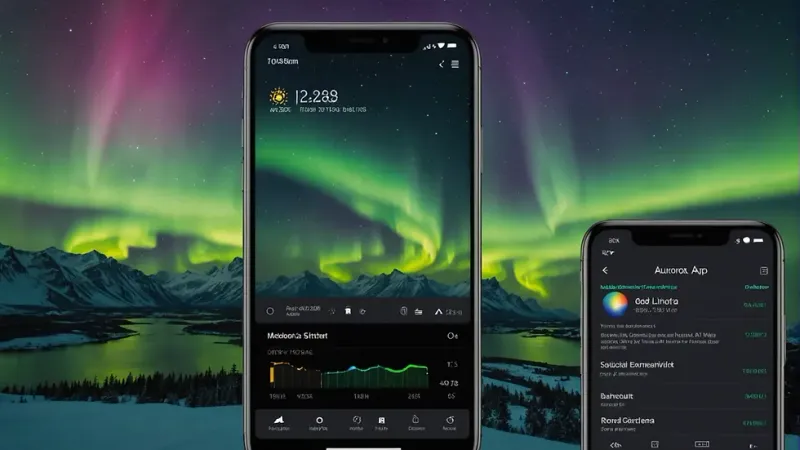
Aurora forecasting has advanced dramatically with specialized technology. My Aurora Forecast tracks solar activity and provides probability predictions based on your exact location.
Space Weather Live offers detailed information about solar storms that trigger stronger displays. Clear Outside and similar apps help identify breaks in cloud cover. Most serious aurora chasers use a combination of KP-index forecasts and local weather predictions to plan viewing nights.
14. Guided Tours Vs. DIY
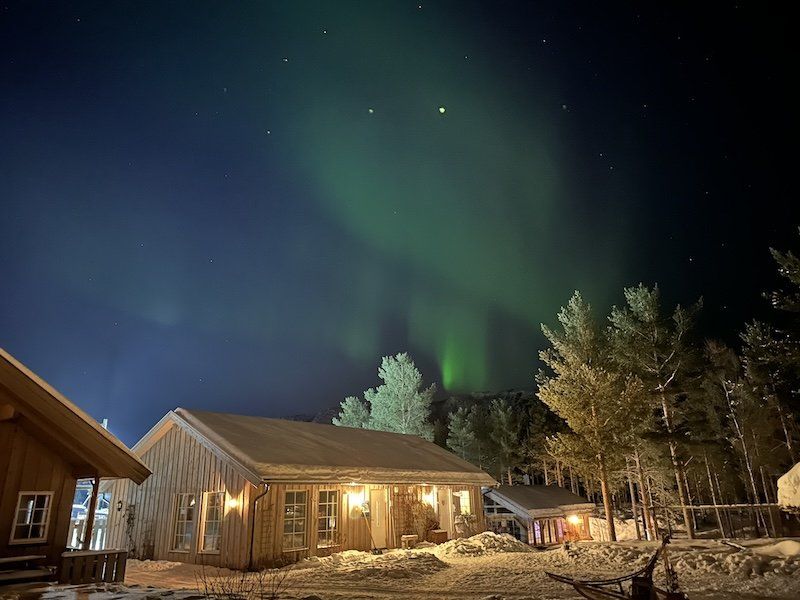
Expert guides know secret viewing spots away from crowds and light pollution. Their experience reading weather patterns significantly increases success chances, especially for first-time aurora hunters.
DIY approaches offer flexibility to stay out longer or change locations based on conditions. Rental vehicles with good heaters become essential for self-guided adventures. Many travelers combine approaches – starting with a guided tour to learn basics, then exploring independently on subsequent nights.
